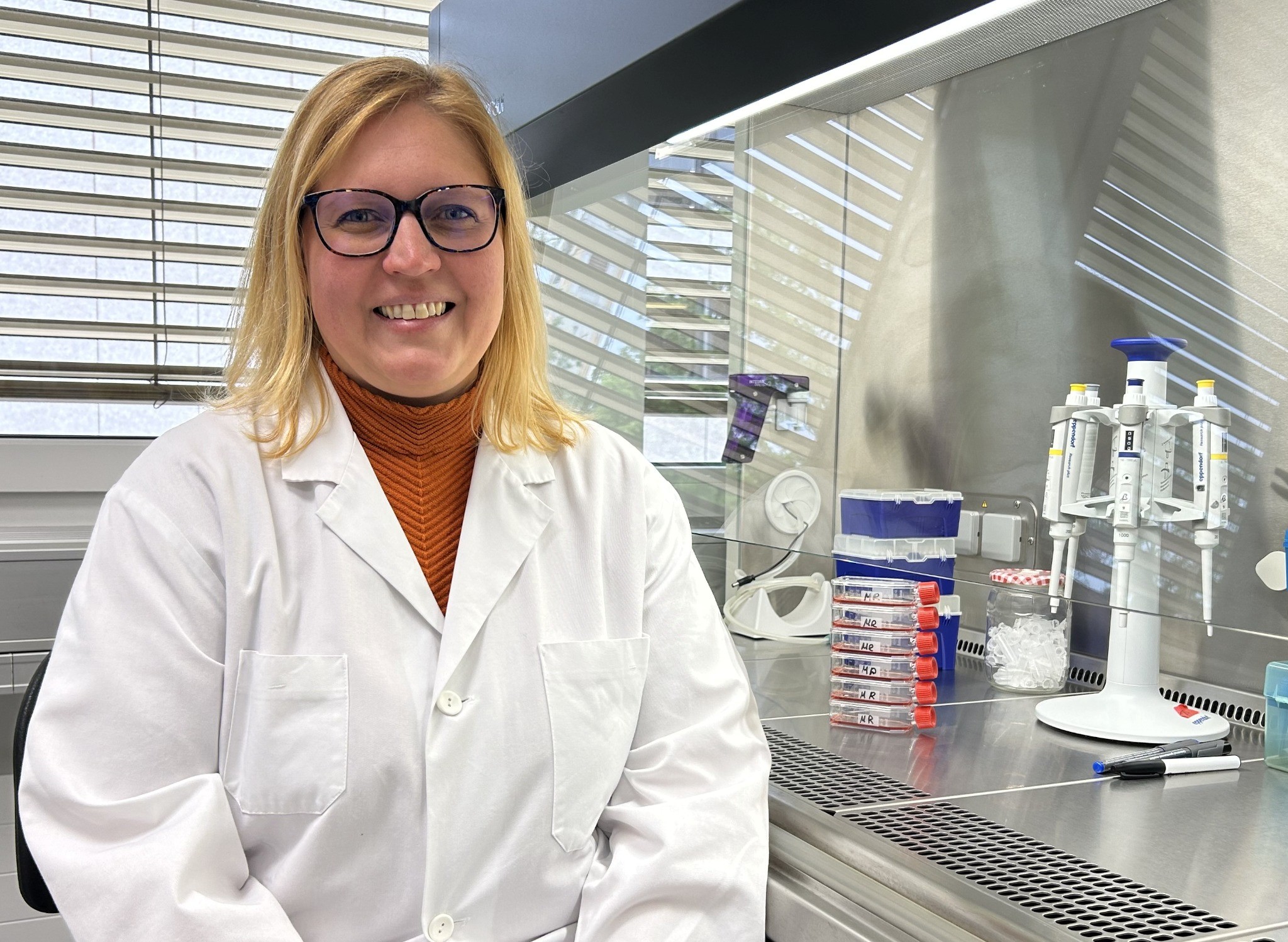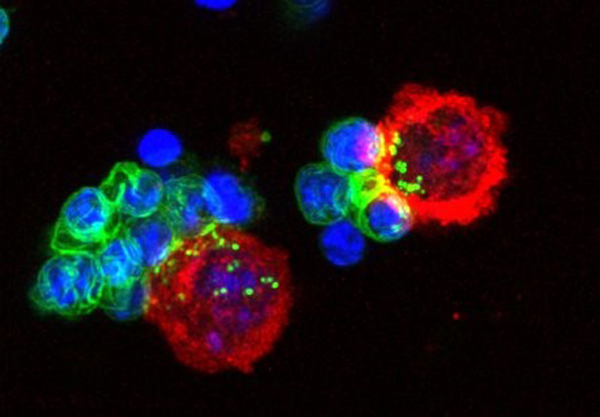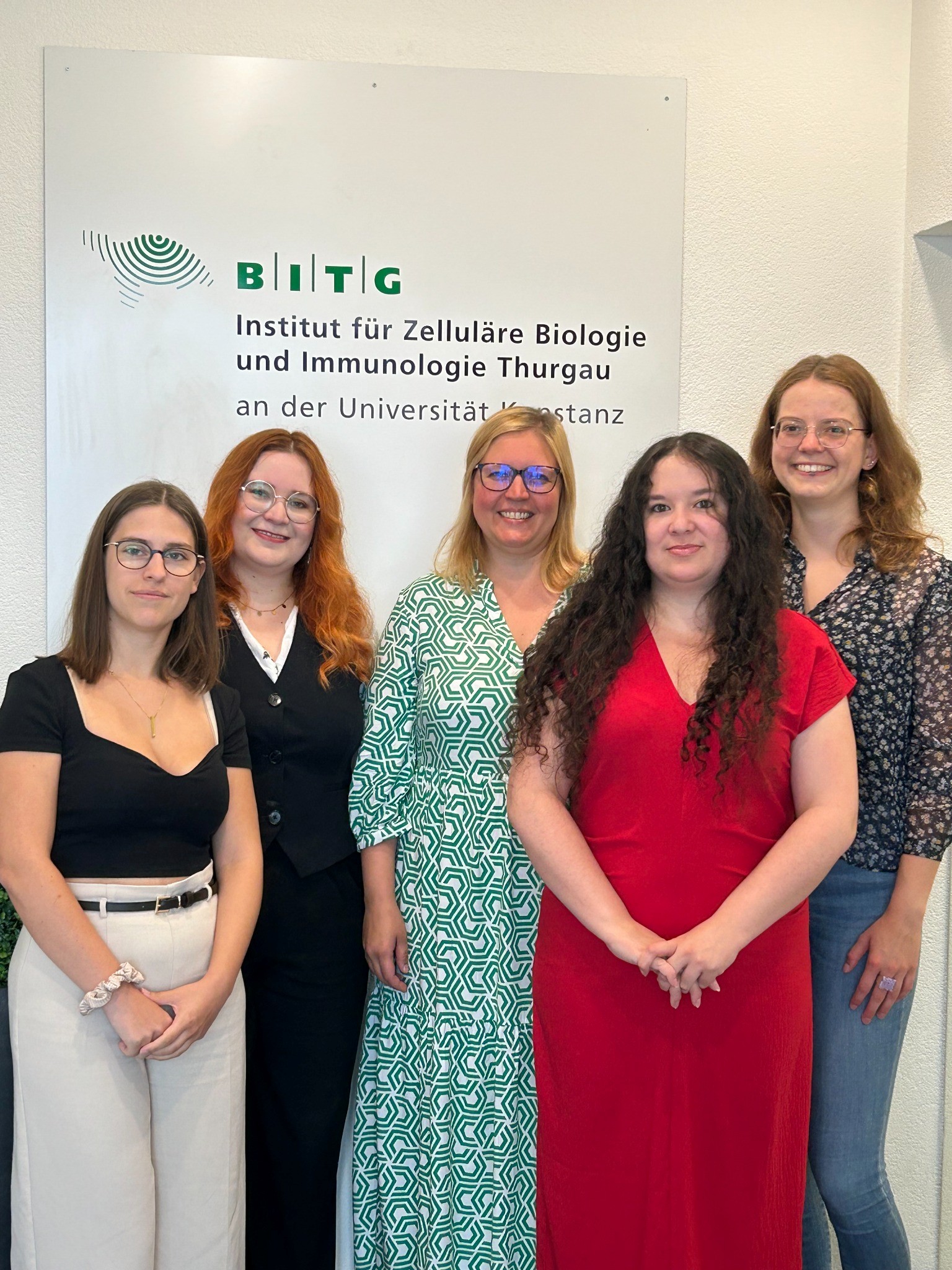Gutjahr Lab - BITG
About us
Our research group at the BITG (Institute of Cell Biology and Immunology Thurgau, University of Konstanz) investigates cellular and molecular mechanisms of hematopoiesis, with a special focus on the chemokine CXCL12 and its receptor CXCR4.
As part of our SNF-funded project (Grant 10005096), we aim to understand how CXCR4 is transported within erythroblasts and which specific signaling pathways it activates. Our work focuses on deciphering the mechanisms by which CXCR4 enters the nucleus and how this influences cellular function. In particular, we are interested in the interactions between CXCR4 and other cellular molecules, such as β-arrestin 1, which plays a key role in intracellular signaling.
Using high-resolution microscopy, we track CXCR4 in living cells to observe its movement and the activation of signaling pathways in real time. A central goal is to understand how CXCR4 and β-arrestin 1 cooperate within the nucleus to influence DNA accessibility, potentially regulating the expression of specific genes.
Furthermore, CXCR4 is known to play a critical role in diseases such as cancer. In certain tumors, CXCR4 has been detected in the nucleus, and we hypothesize that cancer cells may exploit mechanisms similar to erythroblasts to promote their growth. Our research contributes to a deeper understanding of these processes and lays the groundwork for developing targeted therapeutic strategies in diseases where CXCR4 signaling plays a central role.

Dr. Julia Gutjahr in the cell culture laboratory (BITG, 2025).

Figure: The smallest functional unit of erythropoiesis in the bone marrow is the so-called erythroblastic island. A central macrophage (red) is surrounded by erythroblasts (green) in order to phagocytose the cell nucleus (blue) after it has been ejected.
Research Highlight 2025
In July 2025, our findings were featured in a joint press release by the University of Konstanz and Queen Mary University of London. We demonstrated that the chemokine CXCL12 and its receptor CXCR4 play a central role in the enucleation of erythroblasts – a key step in red blood cell maturation. These insights represent an important step toward improving the efficiency of artificial blood production.
More information: Link
Explainer video of the Science Signaling publications.
Our Team
The Gutjahr Lab team at BITG, photographed in July 2025.

Left to right: Members of the Gutjahr Lab in front of the BITG sign.
